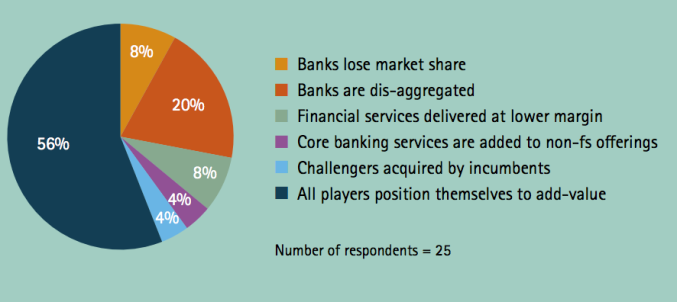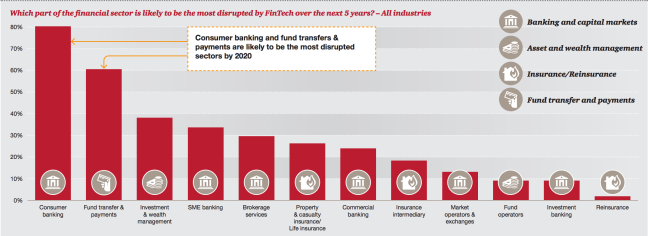This article originally published at http://www.entrepreneur.com.
Being talented with numbers can really pay off if you’re looking to start a profitable business.
Accounting and tax services takes the top spot on the list of the most profitable type of small business with a generous 18.4 percent net profit margin followed by real-estate services (15.2 percent), law firms (14.5 percent) and doctor’s offices (13 percent) reports Sageworks, a financial data service that analyzed the net profit margin of more than 16,000 small businesses (that earned less than $10 million) between September 2014 and August 2015.
(The average net profit across all industries for this report’s time period was 7.2 percent.)
What makes these industries profitable? For one, they’re driven by human capital.
“Service industries,” says Sageworks analyst Jenna Weaver, “are very common to find on the most profitable small-business list. This is generally due to lower overhead and startup costs. A lot of these industries you can start from your house.”
While profit isn’t the only matter for an entrepreneur to consider — other factors to consider are whether the business matches his or her skills, what sort of licensing or training is required and how the business would fare during a recession — it’s an important place to start.
Related: The 10 Best Jobs in America for 2016
Here’s the list of the 15 most profitable types of small businesses and their net profit margins.
1. Accounting, Tax Preparation, Bookkeeping and Payroll Services: 18.4%

“The accounting industry is consistently a top performer on our list,” says Sageworks’ Weaver.
No matter how the economy is doing, everyone needs accountants. Also, this industry tends to have low overhead and repeat clients.
Read This: The Tax and Legal Playbook: Game-Changing Solutions to Your Small-Business Questions by Mark J. Kohler | Amazon | eBooks.com | Barnes & Noble
2. Management of Companies and Enterprises: 15.5%

This industry is made up of small, privately-owned offices of bank holding companies and other types of holding companies.
Some well-known examples of holding companies (that do not fall into the small-business category) are Warren Buffett’s Berkshire Hathaway and Carl Icahn’s ICahn Enterprises.
Read This: Buffett: The Making of an American Capitalist by Roger Lowenstein | Amazon | eBooks.com | Barnes & Noble
3. Offices of Real Estate Agents and Brokers: 15.19%

While the real-estate market is largely dependent on the health of the economy, real-estate brokers and agents have low operating costs and all you need to get started is an agent or brokerage license.
4. Automotive Equipment Rental and Leasing: 14.55%

With the on-demand economy on the rise, Sageworks analyst Libby Bierman says that people may be leasing and renting more cars using on-demand services such as Zipcar — along with more traditional rental services such as Hertz.
5. Legal Services: 14.48%

Anyone who has ever hired a lawyer knows it’s not cheap. Law, like accounting, generally has low operating costs as well as repeat clients. However, this business category includes not only lawyers, but notaries, settlement officers (who deal in the transaction of securities) and title search agents in real estate.
Read This: How to Open & Operate a Financially Successful Notary Business by Mick Spillane | Amazon | eBooks.com | Barnes & Noble
6. Offices of Dentists: 14.41%

Dentists, like physicians, benefit from recurring patients, and while startup costs can be expensive — dental equipment is quite costly — the profession has the advantage of handling several patients at a time, plus many pay out of pocket.
7. Electric Power Generation, Transmission and Distribution: 14.02%

This category of small, privately-held electric power companies includes not just your traditional, fossil fuel electric powers but also hydroelectric, nuclear, solar, wind, geothermal and more.
8. Lessors of Real Estate: 14.01%

Lessors, also known as landlords, show that renting both residential and nonresidential properties is a profitable gig once you recover the initial costs of purchase.
9. Offices of Other Health Practitioners: 13.30%

How is this category different from physicians? It’s not, really. There is a census delineation between chiropractors, optometrists, mental-health practitioners and podiatrists — who fall under this category of “other health practitioners” — and all other types of physicians.
10. Offices of Physicians: 13.01%

Being a doctor requires years of training, certification and likely, medical school debt. However, doctors also benefit from regular clients and relatively low overhead costs.
Read This: The Medical Entrepreneur: Pearls, Pitfalls and Practical Business Advice for Doctors by Steven M. Hacker MD | Amazon | Barnes & Noble
11. Commercial and Industrial Machinery and Equipment Rental and Leasing: 12.58%

It pays to rent or lease. These businesses typically rent or lease commercial machinery and equipment across industries.
12. Religious Organizations: 12.41%

Religious organizations are having a profitable year. Really. Remember, being not-for-profit doesn’t mean your goal shouldn’t be to make a profit. It’s just how you distribute those gains. Instead of giving profits to shareholders, all of yours go to your organization’s mission, which is the furthering of your church’s aims. It has been a good year not only for churches, synagogues, monasteries, mosques and temples, but also for schools, colleges and universities that are operated by religious organizations.
Read This: Launch: Starting a New Church from Scratch by Nelson Searcy and Kerrick Thomas | Amazon | eBooks.com | Barnes & Noble
13. Management, Scientific and Technical Consulting Services: 12.05%

Some types of businesses that fall under this category are businesses that provide either management or consulting on a range of expertise, including human resources, marketing and environmental issues.
14. Specialized Design Services: 11.4%

Small businesses that specialize in interior, industrial and graphic design are flourishing, as the value of a product or business’s function has become inextricably linked to appearance and design.
Read This: Start Your Own Graphic Design Business: Your Step-By-Step Guide to Success by Entrepreneur Press | Amazon | eBooks.com | Barnes & Noble
15. Office Administrative Services: 11.3%

These administrative businesses are the backbone of business operations across a variety of industries — from food services to physicians offices — and provide the day-to-day administrative services, such as record keeping, financial planning and billing.
Read This: Start Your Own Personal Concierge Service: Your Step-By-Step Guide to Success by Entrepreneur Press | Amazon | eBooks.com | Barnes & Noble




 Anthony Thomson. It received a full license from the Bank of England in June 2015 and launched in full after its regulatory authorization restrictions were lifted in April 2016.
Anthony Thomson. It received a full license from the Bank of England in June 2015 and launched in full after its regulatory authorization restrictions were lifted in April 2016.
 WeBank, the online banking affiliate of Chinese Internet giant Tencent Holdings Ltd., is China’s first digital challenger bank
WeBank, the online banking affiliate of Chinese Internet giant Tencent Holdings Ltd., is China’s first digital challenger bank  Launched
Launched Simple
Simple Founded in 2013,
Founded in 2013,  proposition. Unlike multiple challenger banks that are focusing on UI and UX, Secco plans to completely change the banking service itself. Apart from being branchless, Secco plans to provide their services without even an app. They will operate as an ‘underlying’ service hidden in all the apps and social platforms used day-to-day. As of June 2016, they are looking at clearing regulatory approvals and apply for a banking license.
proposition. Unlike multiple challenger banks that are focusing on UI and UX, Secco plans to completely change the banking service itself. Apart from being branchless, Secco plans to provide their services without even an app. They will operate as an ‘underlying’ service hidden in all the apps and social platforms used day-to-day. As of June 2016, they are looking at clearing regulatory approvals and apply for a banking license. Headquartered in London,
Headquartered in London,  Monzo Bank
Monzo Bank Founded in 2013,
Founded in 2013, 




